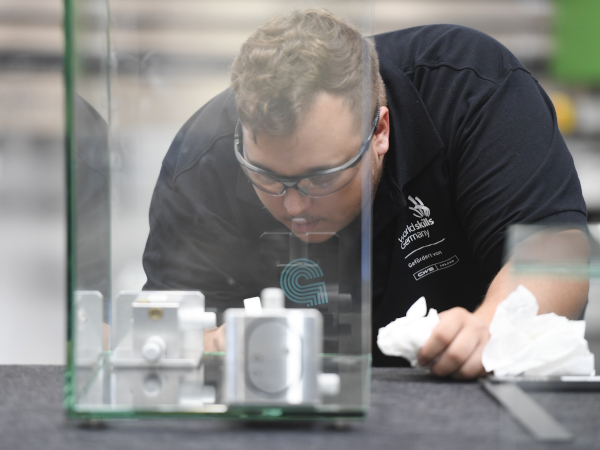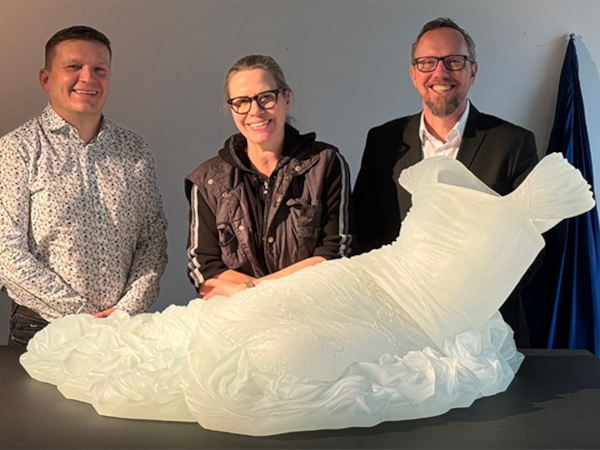Date: 24 May 2004
From the branches of 20 trees, hand-forged of metal so that no two are alike, blown glass fruits will dangle, their bright colors and shining surfaces in strong contrast against the cold gray of the trees.
More glass fruit will encircle the base of each tree -- and carefully placed amid them will be more than 100 laminated cards, one for each artist. The exhibit defines that term broadly -- it could be a musician, a sculptor, an actor. Each card will include a photograph of the artist and a short biography.
Once Walker, aided by her sister Nicole, began to look for artists, writers and performers who had spent time in the military, the list quickly grew so large a memorial orchard might grow again next year. Visitors at this year's event will be asked to suggest people to honor.
Some artists' military service was already well known -- film star Jimmy Stewart won the Distinguished Flying Cross for his World War II services as bomber pilot.
Other names are instantly recognizable -- Edgar Allen Poe, for instance -- but probably few would know he enlisted in the Army and served nearly three years. Cartoonist Jules Feiffer did two years in the Army Signal Corps. Famed rock 'n' roll guitarist Jimi Hendrix was a paratrooper.
With some artists, the connection between their military service and their later work is striking. Kurt Vonnegut's ``Slaughterhouse Five'' was published in the midst of the movement against the Vietnam War. It was clearly an anti-war novel, based largely on Vonnegut's experience as a prisoner of war in Dresden, Germany, when that city was fire-bombed into complete rubble by the Allies. Vonnegut survived in a meat locker five floors below ground and was forced to dig for bodies after the bombing.
For one of the artists whose work will appear in the exhibit, the military has a special meaning. Greg Small's two brothers are now in service. ``I know it's a real state of mind, the whole aggressive combat thing,'' he said. ``I wanted to do something that will make people enjoy life.''
In some way, said Walker's husband, fellow glass artist Bobby Bowes, ``We need to value all of these soldiers, by valuing them as individuals.''
Sometimes, Bowes said, ``On the field of battle, you have to do things you wouldn't do in any other situation.'' And art is ``a way to express and relieve yourself of some pain.''







Add new comment